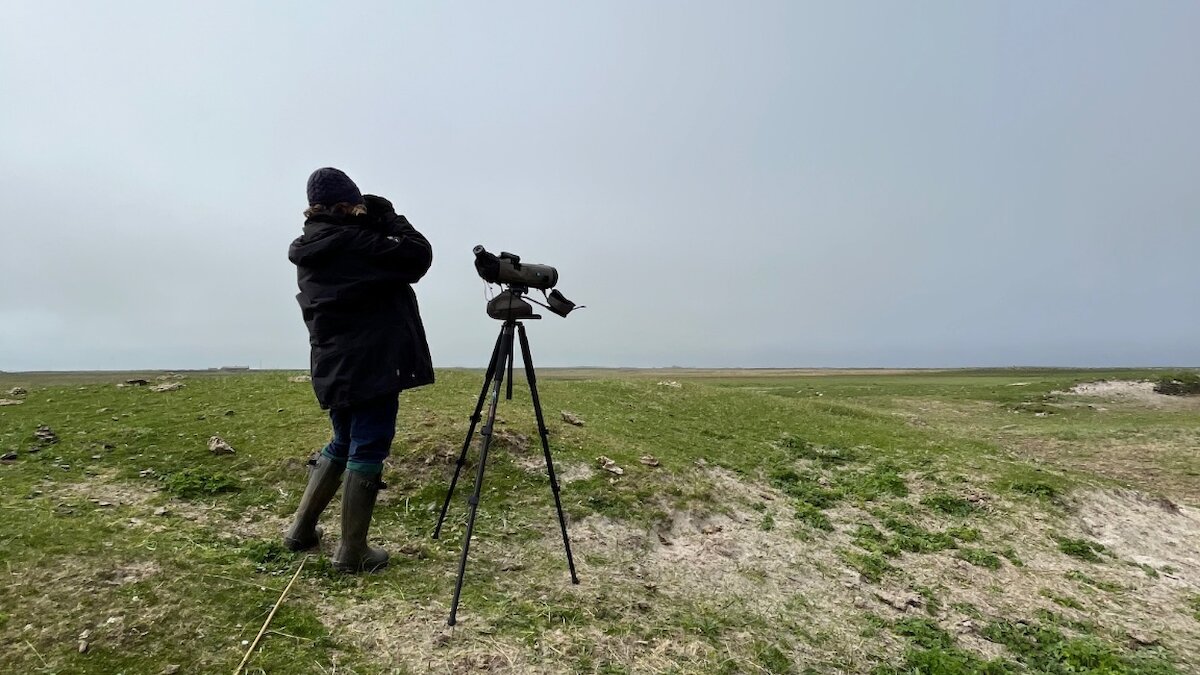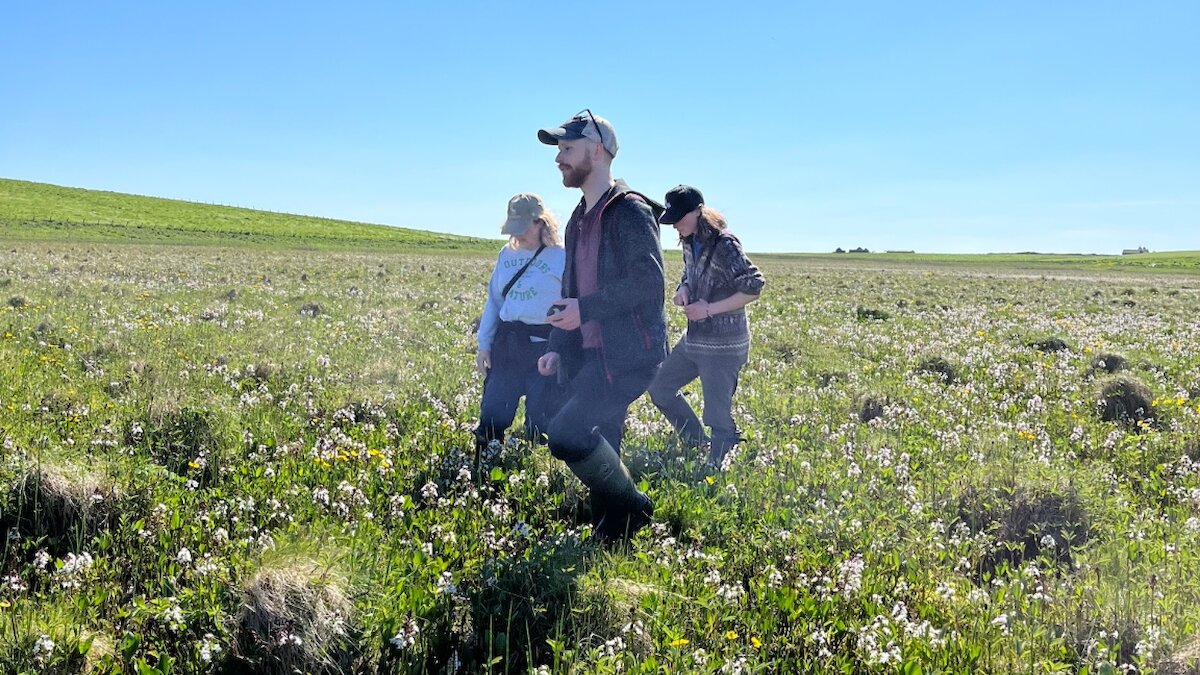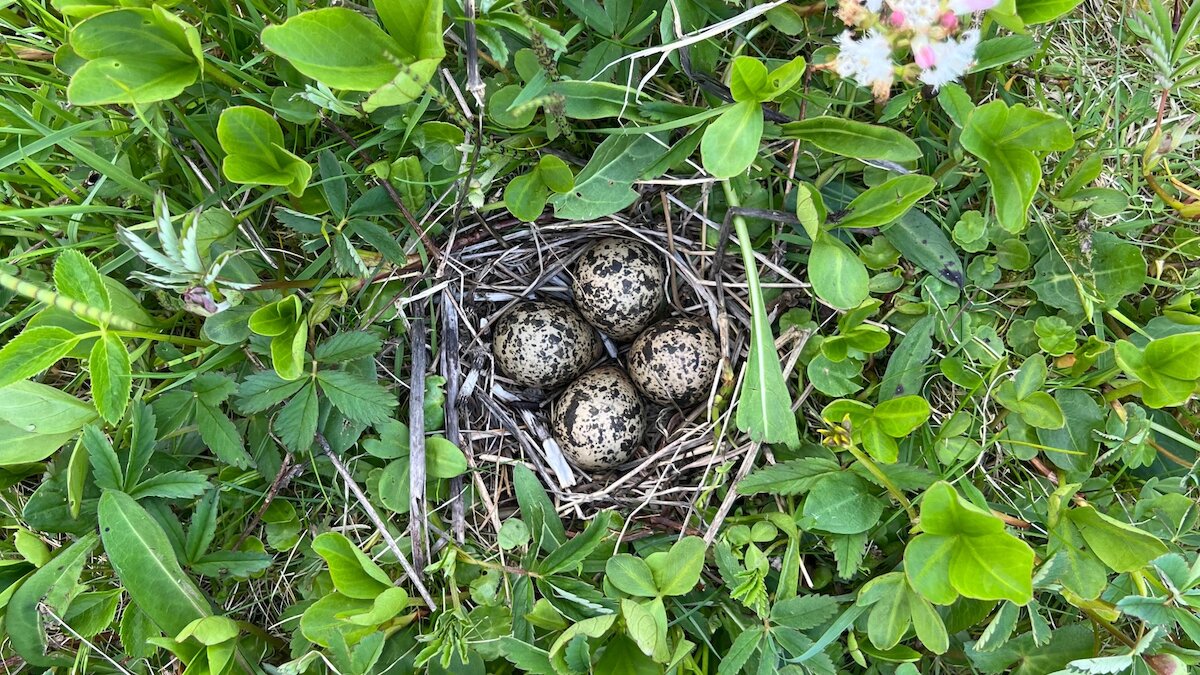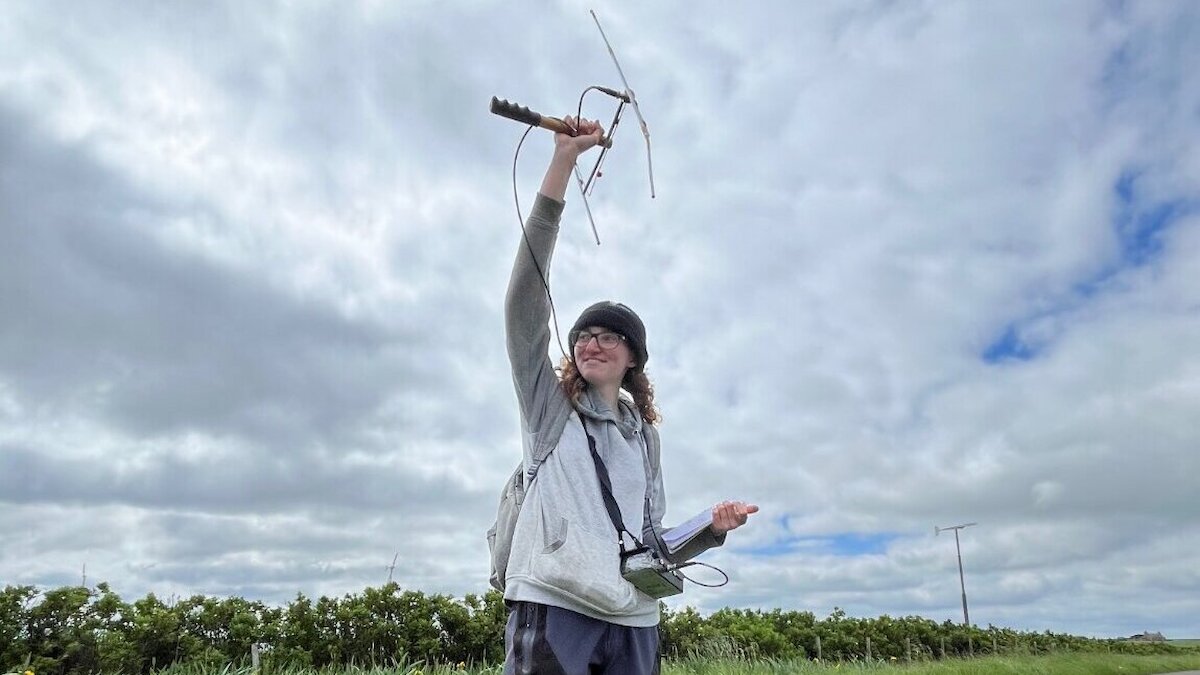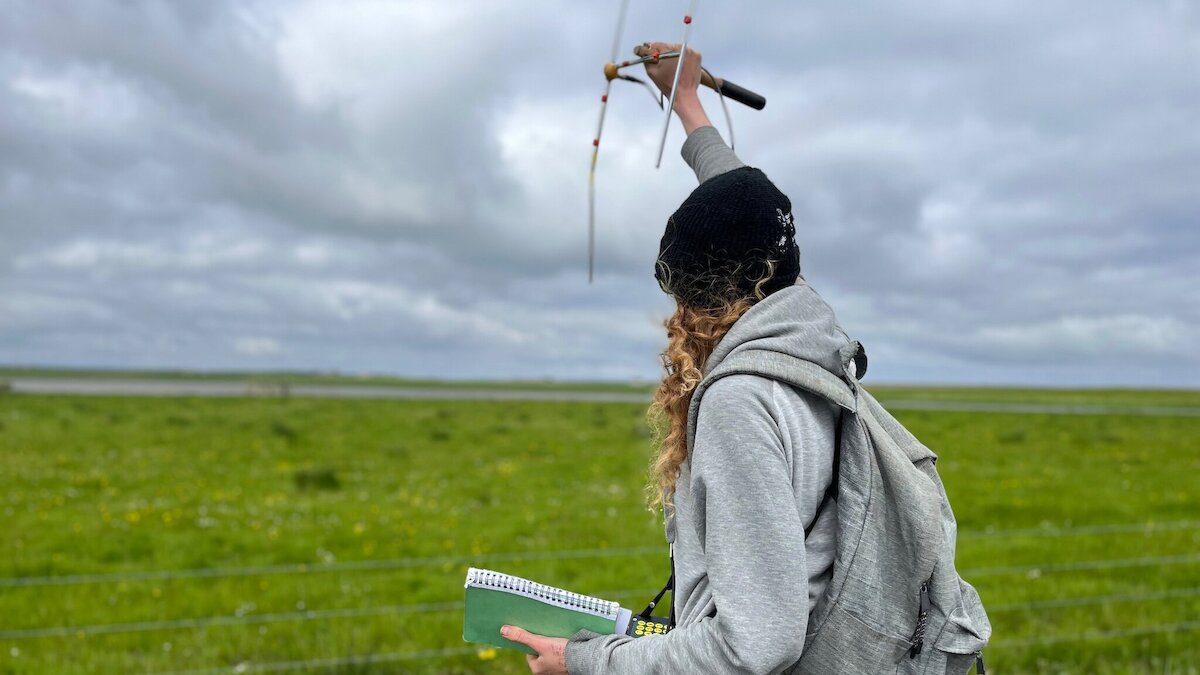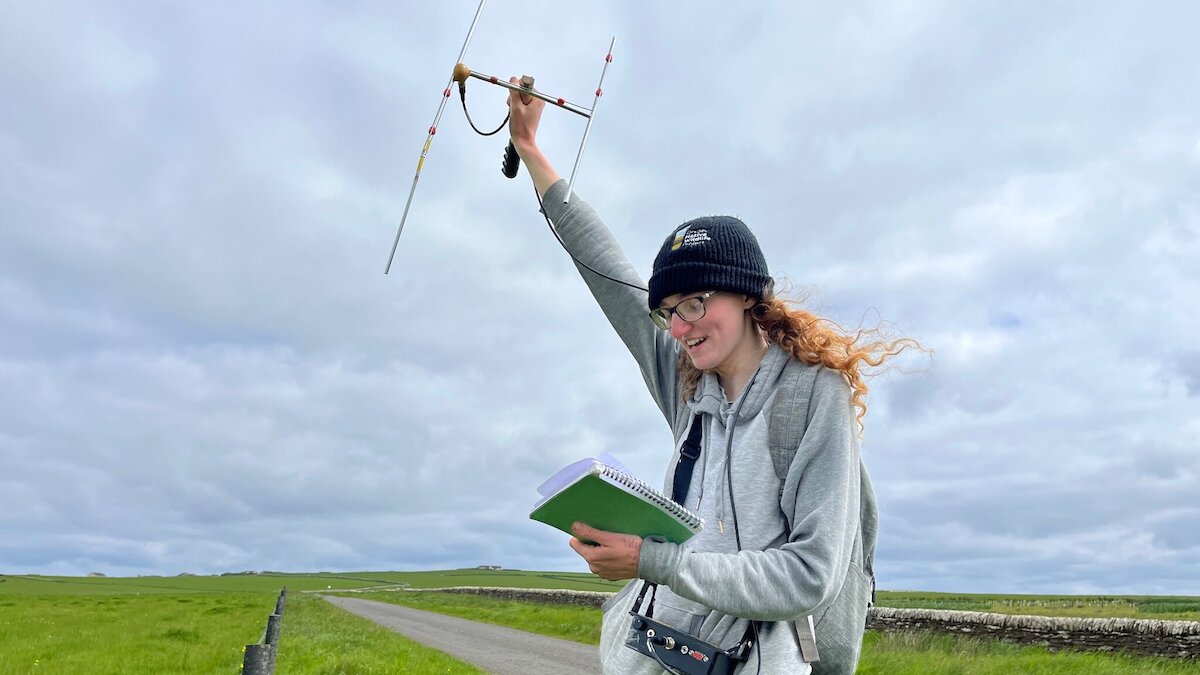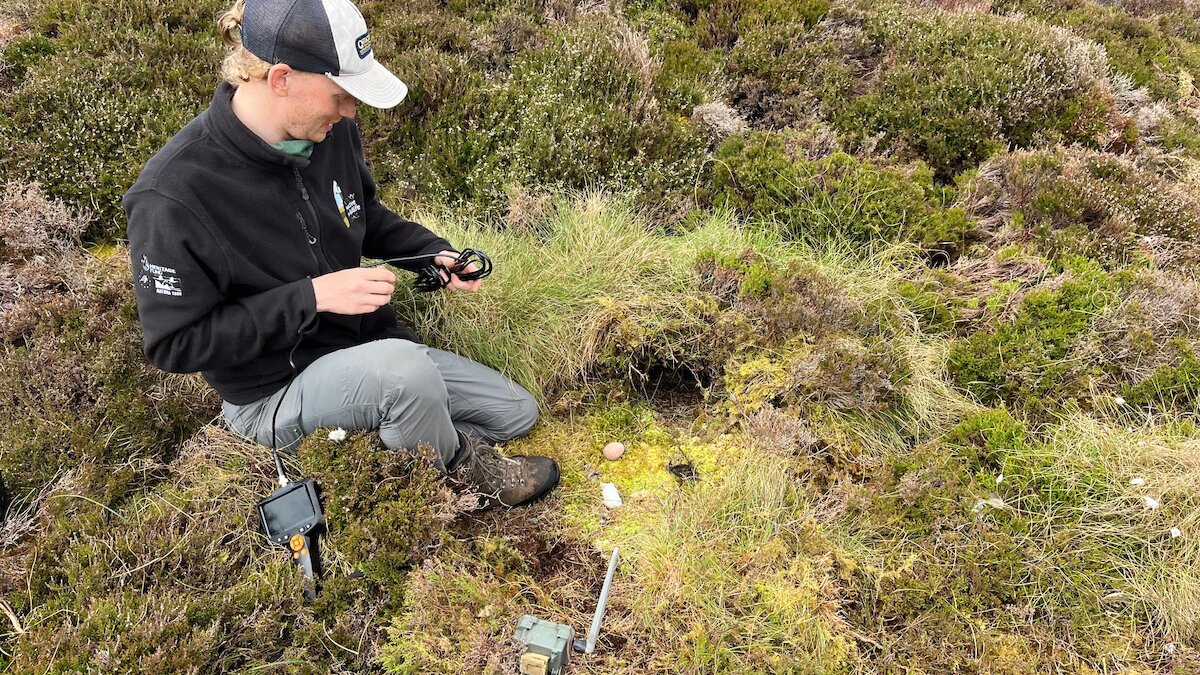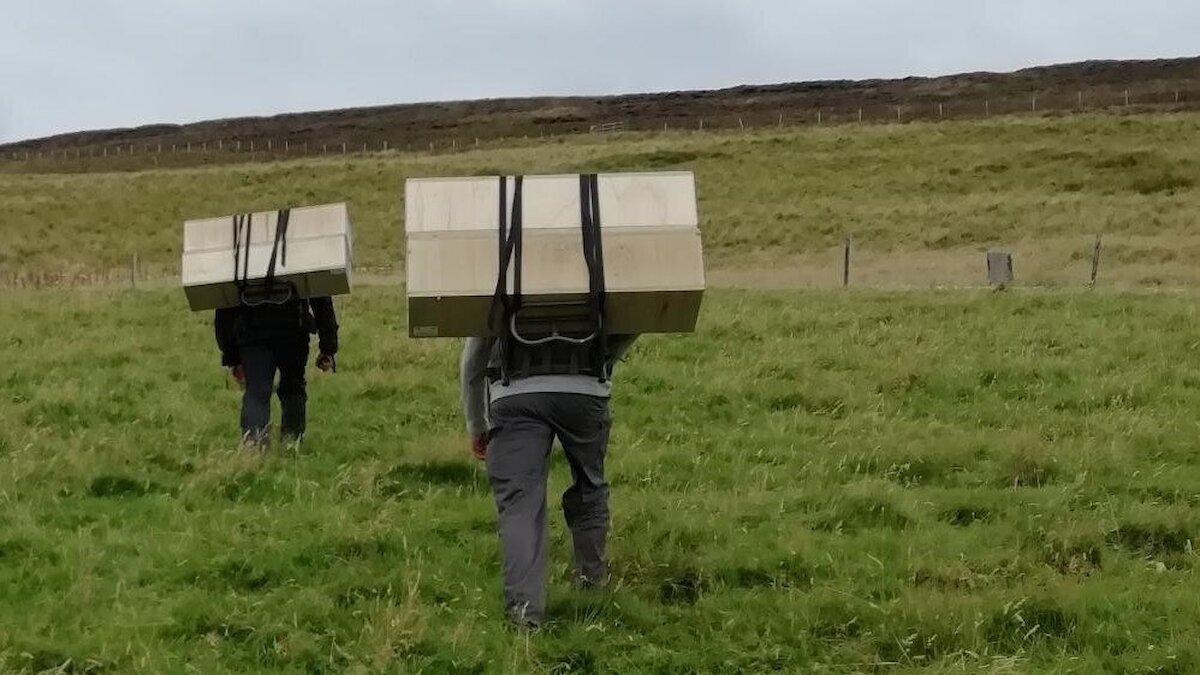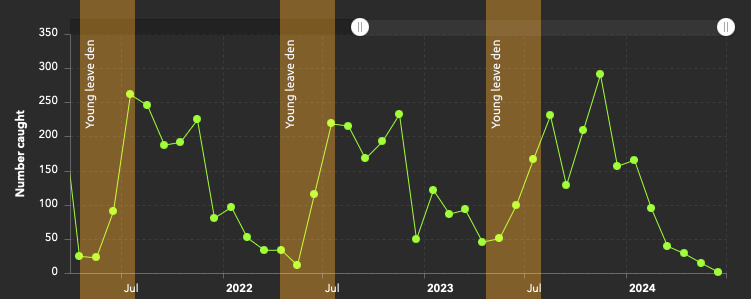The monitoring team have never been busier! Each year during breeding season, we check and track native wildlife populations in Orkney.
They’re currently recording wader populations and breeding success rates. As the name suggests, waders are birds that typically wade through shallow waters or muddy areas - like the oystercatcher, lapwing, or curlew. Populations are being studied at more than 100 sites across the Orkney mainland, linked isles and northern isles. This is the first time the work has been carried out since 2019.
As well as counting populations, the team are locating wader nests and regularly keeping a distanced eye on them until they’re hatched. In Orkney, these are all ground nests which must survive challenging conditions for about a month during their incubation (depending on the species). Eggs could be stolen, eaten, or drowned and washed out due to bad weather. If the eggs survive and hatch, the nest is considered a success! Data currently being collected will go into the 2024 monitoring analysis report, which is expected to be published in early 2025.
The project is also working closely with PhD researcher, Leah Gray, who is studying chick survival rates. She’s been giving some chicks a small tracking chip when they hatch. The chips are harmlessly glued onto their back feathers and eventually fall off when they moult. Using something reminiscent of a TV antenna and radio technology, Leah tracks the young birds as they lead up to fledge. She wants to know how many chicks are surviving to this stage and if they’re not, find out why! While a lot of studies focus on nest success rates, there's limited research on what happens once the young birds leave the nest. Leah's work is contributing to a global interest for wildlife academics!
Her work has been useful for us too! Using her data, we’re getting a clearer picture of the threat stoats pose to young chicks. Leah’s already found a number of her tracking chips end up in stoat food caches - areas where stoats like to store their food.
We’re also keeping a close watch on the Orkney Vole population! Earlier this year, we completed a batch of surveys across more than 30 sites on the Orkney mainland. This work was carried out mostly by volunteers, who went to each site and recorded signs of Orkney Vole life. A second batch of surveys is planned for September. This data will also be included in the 2024 monitoring analysis report.
Over the summer, we’re also monitoring passerine birds. A variety of volunteers, research assistants, and other project staff are conducting surveys in the early mornings. This work occurs every year, but 2024 has seen the largest amount of engagement with volunteers!
We’re clamping down harder on stoat sightings during their breeding season. The clamp down means a rapid response technique is rolling out over summer, while stoats are more likely to be seen in groups. In some cases, we’re getting detailed reports in the morning, setting traps by lunchtime, and catching them overnight.
This season also marks a shift in focus to an intensive targeted trapping strategy. When setting traps, a lot of information is now being considered. If a stoat was seen running across the road, it may not spend much time in the area. But if it was carrying a vole in its mouth, then it might be close to where it stores its food. The eradication team uses this context to decide where to best deploy traps. The combination of public sightings, dog detection, and monitoring helps the team hone in to where stoat activity is happening. The new strategy also involves more frequent checks on the traps. It’s clear that stoats are now living in pockets of preferred habitat, as opposed to being everywhere.
Trials for intensive targeted trapping first rolled out in Deerness in 2022, and then South Ronaldsay, Burray, Glimpse Holm and Lambs Holm in 2023. The trials were considered a success with a much higher stoat catch rate compared to previous years in the same areas. These included included the rapid response technique informed by public sightings, dog detection, frequent checks, and a context-informed ‘smarter’ trapping network.
Looking at our statistics - we are seeing similar trends to previous years. As we head into longer summer days our trap checks are increasing, and the amount of stoats caught each month is dropping. The drop in our stoat catch rate is similar to the same time in previous years. While females are denning stoat's are more cautious than usual and harder to catch. Once young are leaving the den, they'll become visible and easier to catch.
| Feb | March | April | May | Project Total*** |
Individual* trap checks | 10,175 | 10,383 | 12,566 | 11,315 | 440,346 |
Stoats caught** | 95 | 40 | 29 | 15 | 6,116 |
* Most trap boxes contain two traps.
** The stoats are killed using a type of lethal, humane trap – the DOC 200 – which is approved by the Spring Trap Approval Order for Scotland and the UK and meets the welfare standards defined by the Agreement on International Humane Trapping Standards (AIHTS).
*** Total statistics start date from 1 August 2019.



